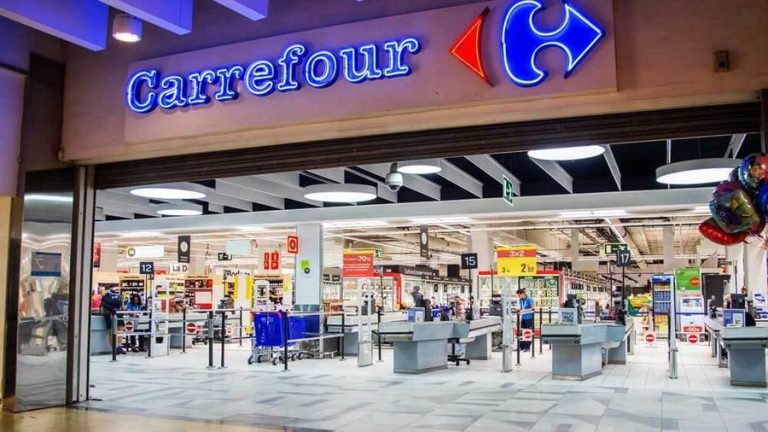Africa is fast becoming the next frontier for global retail. As cities grow and disposable incomes rise, global brands in African malls are expanding their footprint across the continent. From Nike and H&M to Carrefour and Woolworths, major players are making strategic moves to tap into Africa’s rapidly evolving consumer base.
This article explores the reasons behind this surge, the benefits for both brands and consumers, and the most active regions attracting international retail giants.
1. Africa’s Rising Middle Class
One of the biggest draws for global brands is Africa’s growing middle class. According to the African Development Bank, over 350 million Africans are now classified as middle class. This demographic seeks quality, branded goods and a modern shopping experience — both of which global brands are ready to offer.
As this consumer segment continues to expand, malls serve as the ideal hub for fulfilling aspirational shopping needs.
2. Urbanization and Infrastructure Growth
Africa is urbanizing faster than any other continent. Major cities like Nairobi, Lagos, Johannesburg, and Accra are seeing rapid development. With this growth comes investment in real estate, including high-end shopping malls designed to serve urban consumers and tourists.
These malls offer stable, secure, and brand-compliant environments — something international brands need to operate successfully.
3. Strategic Partnerships and Franchising
Global brands rarely go it alone. Many are entering African markets through strategic partnerships with local franchise holders. For example, Carrefour operates in Kenya and Uganda through a franchise deal with Majid Al Futtaim. South Africa’s Shoprite and Pick n Pay have also paved the way for brands to scale up operations continent-wide.
These partnerships reduce risk and allow for faster brand adaptation to local tastes and preferences.
4. Mall Culture Is Gaining Popularity
In urban centers, mall culture is catching on. Malls are no longer just retail spaces—they’re lifestyle destinations. With food courts, entertainment zones, co-working spaces, and modern aesthetics, African malls have become weekend hotspots for families and young professionals.
This consumer behavior mimics that of shoppers in developed economies, making African malls an attractive proposition for global retailers looking to create brand experiences.
5. Untapped Markets with High Potential
Unlike saturated Western markets, many African countries remain under-retailed. For example, Nigeria has one of the largest populations globally but a low number of formal retail outlets per capita. This presents huge growth potential for brands entering early.
Brands that establish themselves now can shape consumer loyalty and market expectations for years to come.
6. Government Support and Retail-Friendly Policies
Several African governments are actively encouraging foreign direct investment (FDI) in retail. Countries like Rwanda, Kenya, Ghana, and Morocco offer investment incentives, tax breaks, and ease-of-doing-business reforms to attract international players.
This has helped reduce operational barriers and makes African mall spaces fertile ground for retail expansion.
7. E-Commerce Complements, Not Competes
While online shopping is growing in Africa, the infrastructure to support full-scale e-commerce is still developing. For many global brands, having a physical retail presence remains essential, especially in regions where customers prefer to see, touch, and try products before buying.
Click-and-collect services offered in malls also allow brands to integrate digital and physical channels seamlessly.
8. Africa’s Youthful, Tech-Savvy Population
With over 60% of Africa’s population under 25, the continent boasts a young, connected, and trend-conscious audience. These consumers are highly receptive to international fashion, electronics, and lifestyle brands.
Shopping malls, filled with global labels, give this demographic access to global trends—driving demand and sustained traffic for tenants.
9. Tourism and Expat Demand
Key cities in Africa are also hubs for tourism and expatriates, who bring with them high spending power and global shopping expectations. Malls in areas like Nairobi’s Westlands, Accra’s Osu, and Johannesburg’s Sandton cater to this demographic with brands like Adidas, Zara, Apple, and Hugo Boss.
This international demand creates a consistent revenue stream for global retail brands.
10. Success Stories Inspire New Entrants
The success of early entrants is encouraging more brands to join the African mall revolution. Chains like Mr Price, Woolworths, and Carrefour have proven that with proper localization, Africa is profitable. Their growth stories provide a roadmap for others looking to enter.
In fact, malls like Two Rivers (Kenya), Mall of Africa (South Africa), and Accra Mall (Ghana) are already serving as launchpads for regional expansions.
What This Means for Africa’s Retail Ecosystem
The increasing presence of global brands in African malls is driving competition, improving service standards, and accelerating the development of modern retail infrastructure. Consumers benefit from more product choices, higher quality, and globally benchmarked service levels.
Meanwhile, local brands are leveling up to remain competitive, leading to an overall strengthening of the retail ecosystem.
Conclusion: A Win-Win Future for Retail in Africa
The growing investment by global brands in African malls is a reflection of the continent’s strategic retail potential. With favorable demographics, increasing disposable income, and improved urban infrastructure, Africa is no longer on the sidelines of global retail — it’s at the center of it.
As brands continue to enter, adapt, and expand, African consumers will enjoy richer retail experiences, and mall culture will only grow stronger.
🔍 Key Takeaways
- Global brands are investing in Africa due to urbanization, a growing middle class, and retail-friendly policies.
- Strategic partnerships make it easier for brands to enter new markets.
- Malls in Africa are becoming lifestyle destinations, attracting both locals and tourists.
- Physical retail is thriving alongside e-commerce due to logistical challenges and consumer habits.
- The trend benefits both consumers and local businesses, transforming the African retail landscape.

